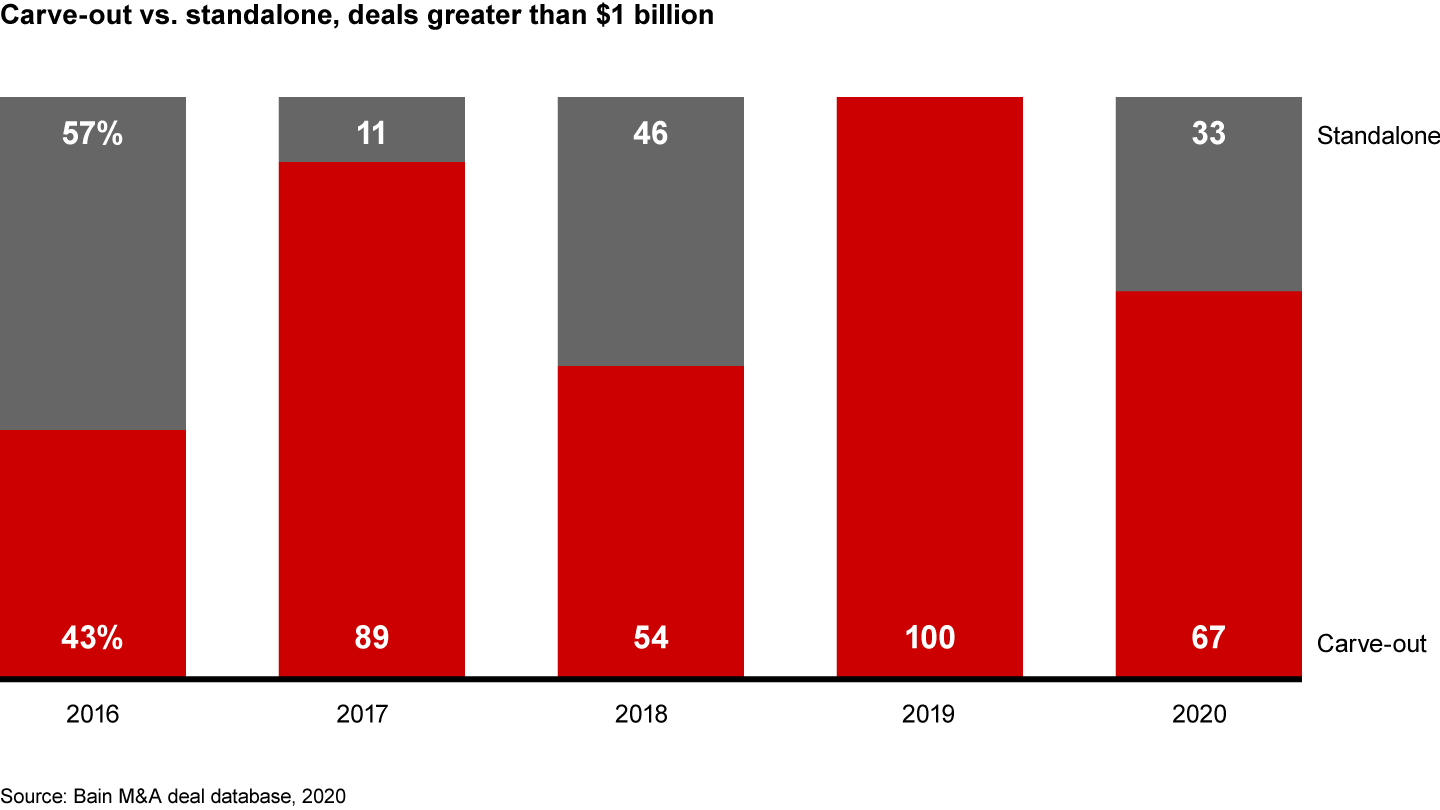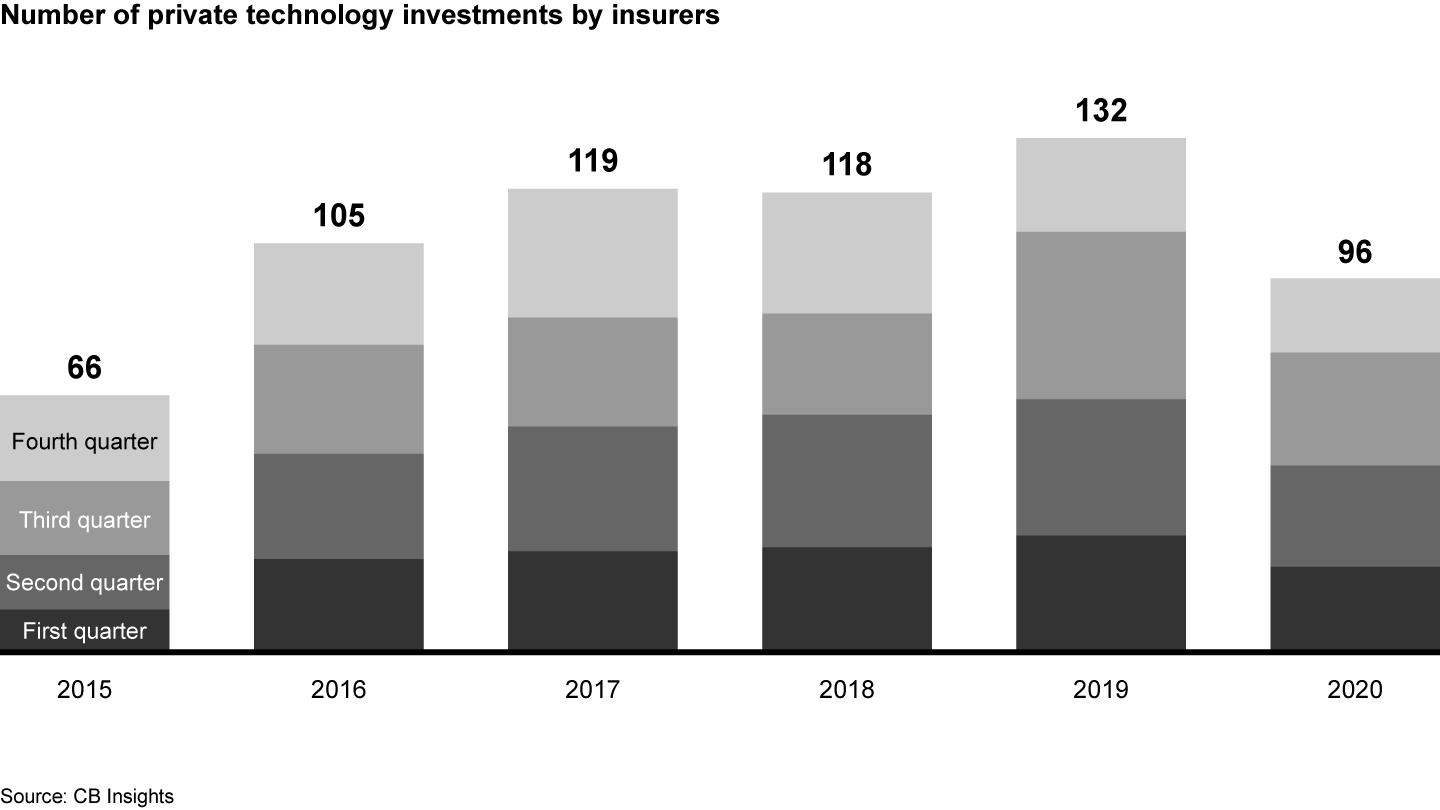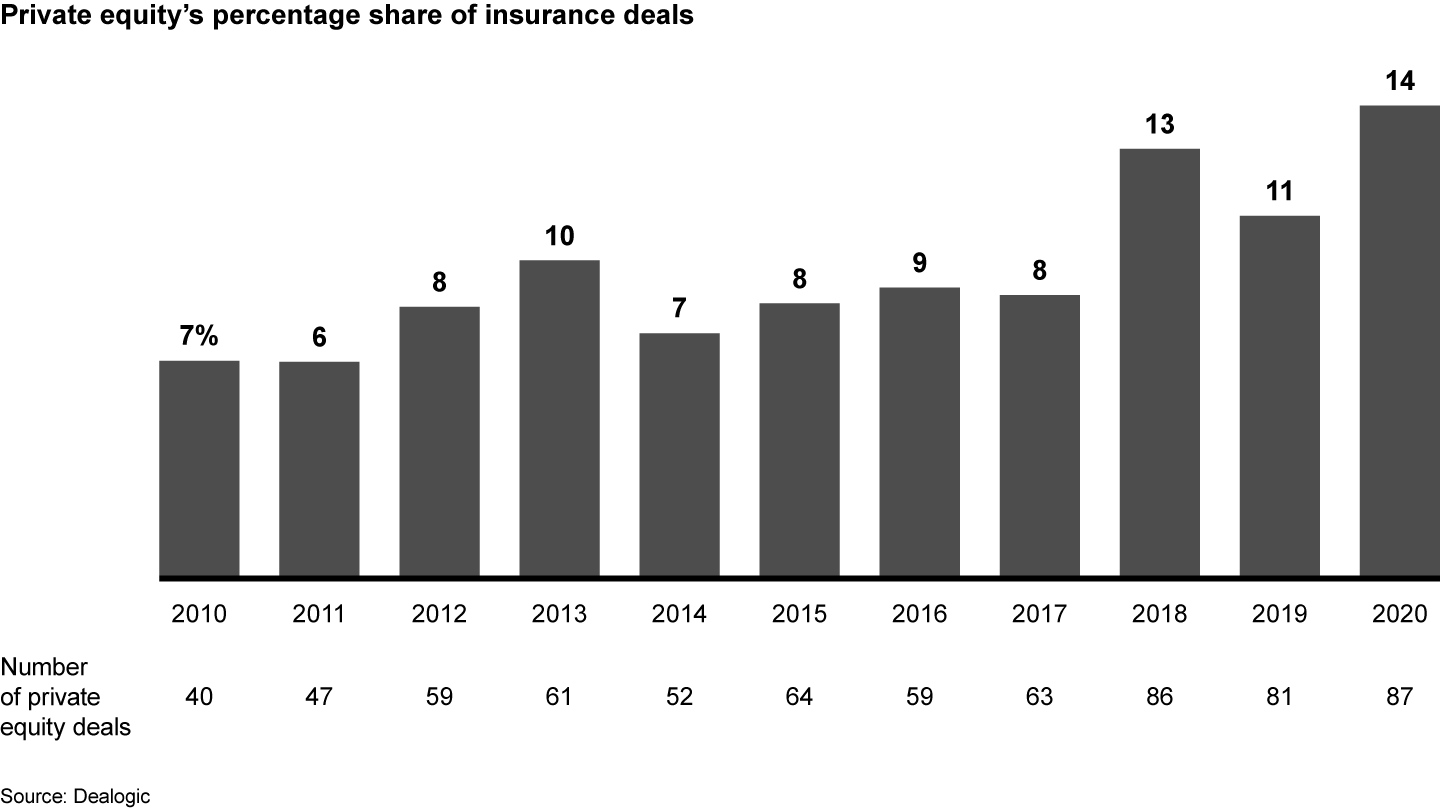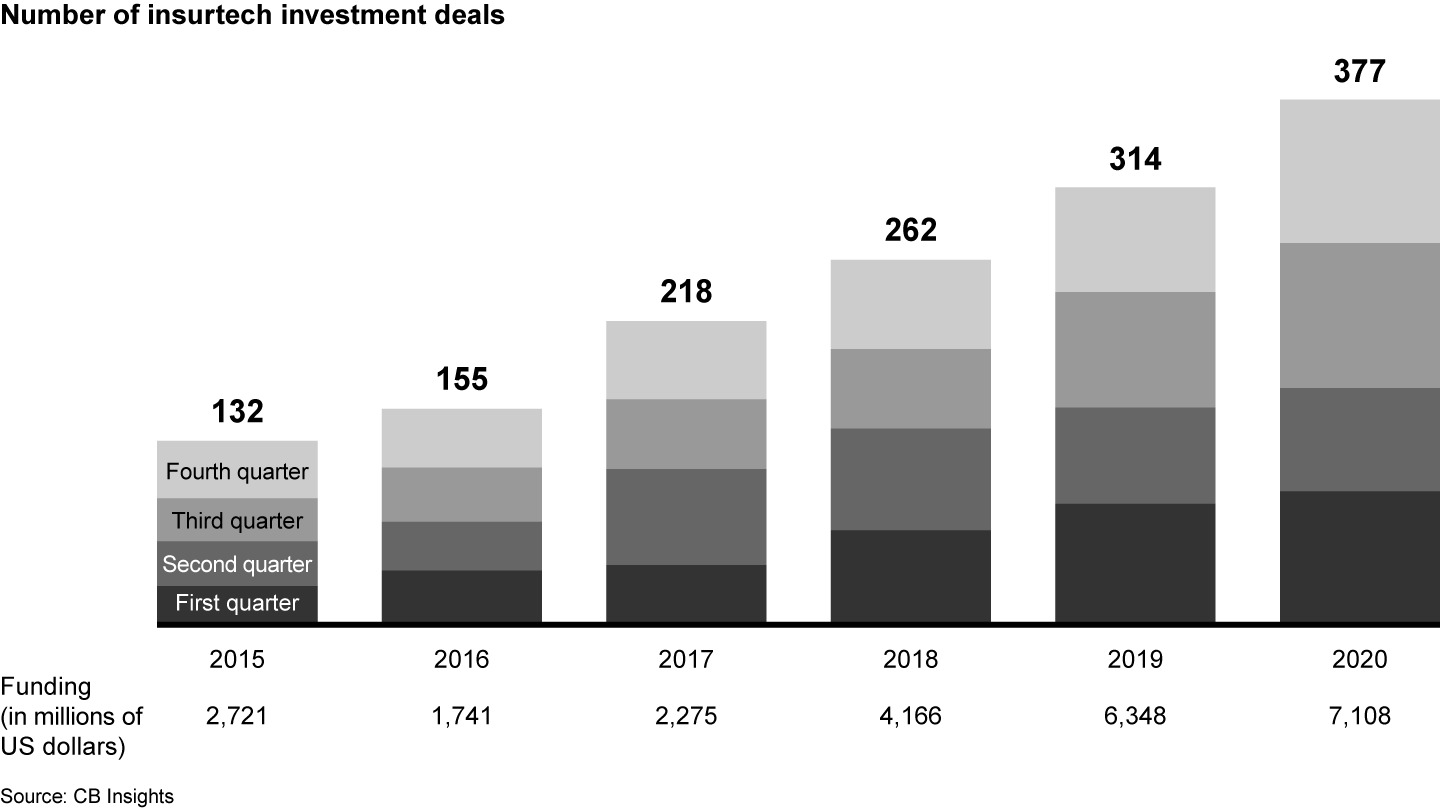M&A Report
 }
}
概要
- Insurers are streamlining their businesses to redefine themselves with a narrower focus and stronger core. Divesting of noncore businesses represented about 70% of insurance deals valued at more than $1 billion over the past five years.
- Buyers are taking advantage of these divestitures to strengthen their market position and step into near adjacencies.
- As the industry evolves, traditional insurers need to develop new capabilities. Without consensus on the best path forward, many are choosing investments and partnerships over acquisitions.
Insurers are streamlining to focus on their cores
The year 2020 continued a multiyear trend in which global insurers are streamlining their businesses by simplifying operations and redefining themselves with a narrower scope and stronger core. Pressure on profit pools from low rates as well as increasingly complex capital requirements have forced them to take a more critical look at the ability of their business units to create sustainable value. Because of the higher demands on management attention and the need for digital investments in the company’s core, peripheral businesses seem less and less attractive. US insurers questioned multiline models that do not provide clear distribution advantages. European insurers, with Solvency II capital/risk diversification benefits protecting multilines, questioned the logic of geographic reach. Increasingly, the answer was to divest. In fact, divestitures have represented the majority of insurance M&A valued at more than $1 billion over the past five years (see Figure 1).

Examples of this drive for focus are everywhere. For example, Aviva sold its Singapore business and Italy’s Aviva Vita. AXA also simplified its footprint and continued its shift to focusing on property and casualty, following the 2018 purchase of XL. Building on the 2019 separation of its US business, AXA completed the sale of its Poland, Czech Republic, and Slovakia businesses to Uniqa in October 2020. That same month, AIG announced the separation of its life and retirement business to create a simpler corporate structure and establish two independent market-leading companies.
Streamlining also can deliver a more straightforward entity that is better positioned for sale. For example, UK mutual insurer LV= divested its auto and home businesses to Allianz in 2019, and a year later, announced their sale to Bain Capital (see “Private Equity Investors’ Appetite for Insurance”).
Buyers are doubling down to strengthen their positions
For buyers, “more of the same” helped strengthen the core and provided opportunities for meaningful cost synergies.
The largest insurance deal in 2020, Aon’s $30 billion bid for Willis Towers Watson, is perhaps the best illustration of doubling down on what you know—it will create the world’s largest broker and generate $800 million in cost savings. If the deal clears regulatory scrutiny, mandated divestitures will likely create attractive opportunities for others to acquire assets.
Allstate used its purchase of National General to jump to 10% market share, grow in nonstandard auto insurance, and reinforce its independent agent network. Rival State Farm took a very similar move in nonstandard auto insurance with its first ever acquisition, buying Gainsco. And Farmer’s took advantage of MetLife’s property and casualty divestiture to become the No. 6 US auto carrier and No. 3 US home carrier.
Bain Partner Simon Porter shares ongoing M&A trends in insurance as well as what to expect in 2021.
Investments and partnerships are helping insurers test the waters for new capabilities
While most insurers are staying close to home with their inorganic moves, they must build new capabilities to keep pace in a rapidly evolving industry. As there is still considerable uncertainty about how emerging capabilities will mature, many established insurers have chosen to access new capabilities with investments and partnerships. While private technology investments by incumbent insurers slowed in 2020 from their recent pace (see Figure 2), we expect a rebound in 2021 as insurers build for the future. The continued market enthusiasm for insurtechs (see "Record Pace for Insurtechs") suggests that there is no shortage of innovative ideas and capabilities that could benefit insurers.

At the same time, partnerships for new capabilities flourished. For example, AIA’s partnership with ZhongAn subsidiary ZA Tech enables the insurer to build new digital solutions faster and attract new customers. Meanwhile, AIA also has engaged in a broad range of investments and partnerships with players in the health and wellness space in 2019 and 2020, including medical case management provider Medix, global data science and healthcare technology company Holmusk, and India's digital healthcare platform Practo. For its part, Prudential Corporation Asia enhanced its Pulse digital health app through a partnership with PAI Health, augmenting capabilities gained from earlier partnerships with remote healthcare provider Babylon Health and personal wellness start-up Tictrac.

Insurers Use M&A to Redefine Themselves
Key trends in M&A in insurance include a continued focus on divestitures, rising private equity investment, and a record pace for insurtech deals.
Staying on course for 2021 and beyond
We anticipate that legacy insurers will continue their focus on cleaning up and reinforcing their core portfolios over the near term. Peripheral businesses in portfolios will continue to become the topic of exploratory divestiture conversations. This will create attractive acquisition opportunities for companies looking to strengthen their market positions or pursue adjacencies.
Partnerships and investments will continue to be the primary approach for companies pursuing new capabilities. While there is no shortage of good ideas out there, the exuberant levels of investment have made it difficult to sort the wheat from the chaff—and there are still more questions than answers about many emerging approaches.
That said, over time, as insurers become more confident about which capabilities will be most important and in their ability to apply these capabilities at scale, we expect to see increased interest from traditional insurers in owning and advancing proprietary capabilities.
Insurers need to pursue both of these paths—namely, actively strengthening their core businesses while building their conviction about the capabilities that effectively will allow them to compete and win as the industry continues to move faster toward a digital future.
Private Equity Investors’ Appetite for Insurance
There seems to be no end to private equity’s appetite for insurance companies. Private equity investment accounted for 14% of deal volume in 2020, having more than doubled over the past decade (see Figure).

In July, KKR announced its deal to acquire Global Atlantic, which, in turn, rounded out 2020 with a series of multibillion-dollar reinsurance transactions with Great American ($5.7 billion) and Unum ($8.5 billion). Carlyle and Hellman & Friedman invested $1 billion to launch reinsurer Vantage Risk, a subsidiary of Vantage Group Holdings. TPG partnered with Singapore Life to take the largest stake in Aviva Singapore as it spun out from its UK parent. In the closing weeks of 2020, LV= announced the sale of its savings and retirement and protection businesses to Bain Capital for more than $700 million. The deal followed Bain Capital’s purchase of UK insurer esure for $1.5 billion in 2018.
We expect private equity investors will continue to pursue capital-light businesses such as brokerages and tech providers as well as increase their appetite for runoff and core insurance businesses in which they can apply their investment expertise and their risk appetite, which generally is higher than more traditional players.
Record Pace for Insurtechs
Insurtechs are continuing to get more attention and funding than ever before from traditional insurers and other investors. Investments totaled more than $7 billion compared with $6.3 billion in 2019 (see Figure).

The year 2020 saw significant exits. There were the long-rumored IPOs for Lemonade and Root, with valuations to match the hype—Root’s IPO valuation of about $7 billion was 14 times its 2019 revenue. Home insurer Hippo followed its June announcement to acquire long-running partner Spinnaker Insurance Company with a July funding round valued at about 15 times revenue, leading to expectations of a 2021 IPO. Meanwhile, Metromile, hot on the heels of a partnership to provide insurance to Ford Motor Company customers in September, announced it would go public via a special purpose acquisition company.
The continued energy and round of substantial exits could spur increased deal activity as insurtechs consolidate to build sufficient size to become self-sustaining—or as traditional players become more certain about the winning capabilities they seek. In the near-term, however, insurtechs pursuing valuations in line with recent standouts may be out of reach to all but the most resolved of incumbents.



